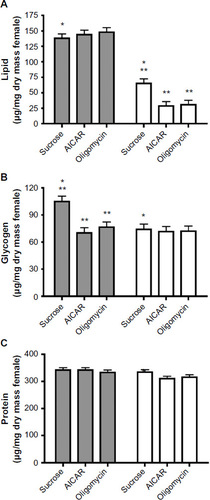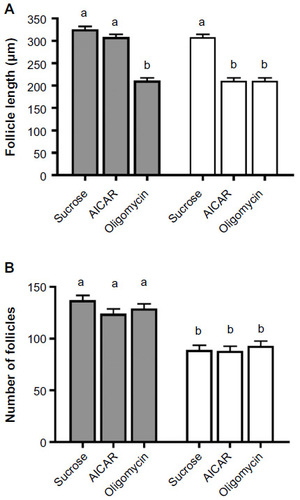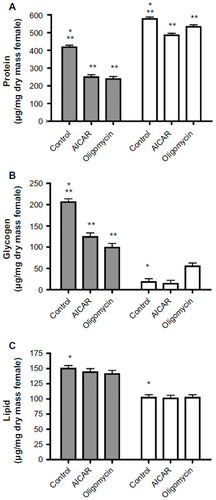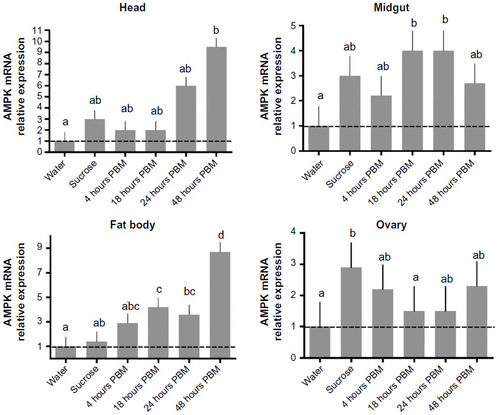Figures & data
Figure 1 Effect of AMPK activators on nutrient reserves of adult female Georgecraigius atropalpus.
Abbreviation: AICAR, 5-aminoimidazole-4-carboxamide-ribonucleoside.

Figure 2 Effect of AMPK activators on follicle growth in adult Georgecraigius atropalpus.
Abbreviations: AICAR, 5-aminoimidazole-4-carboxamide-ribonucleoside; HSD, honest significant difference.

Figure 3 Effect of AMPK activators on nutrient reserves of adult female Aedes aegypti.
Abbreviation: AICAR, 5-aminoimidazole-4-carboxamide-ribonucleoside.

Figure 4 Comparison of the effect of AMPK activators on nutrient reserves of adult female Georgecraigius atropalpus and Aedes aegypti.
Abbreviation: AICAR, 5-aminoimidazole-4-carboxamide-ribonucleoside.

Figure 5 qPCR analysis of AMPK transcript abundance in heads, guts (without blood), abdominal walls (including fat body), and ovaries of Aedes aegypti females in response to feeding on water, sucrose, or blood meal.
Abbreviations: qPCR, quantitative real-time polymerase chain reaction; HSD, honest significant difference; PBM, post-blood meal.

